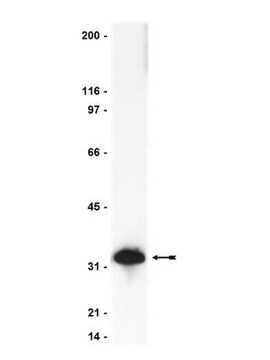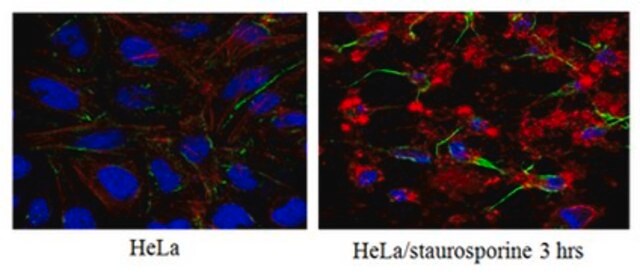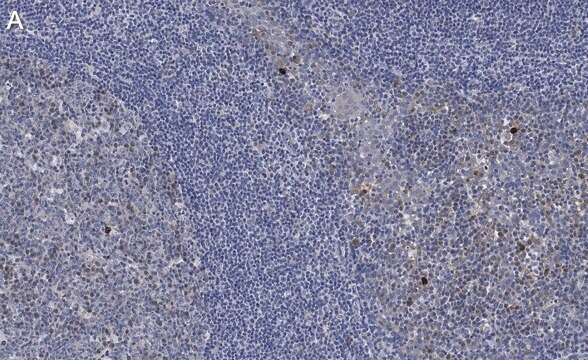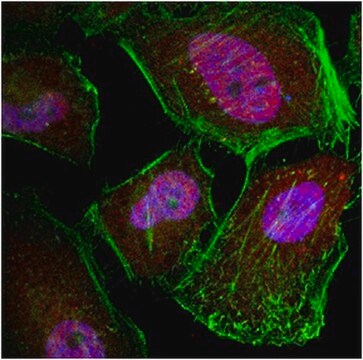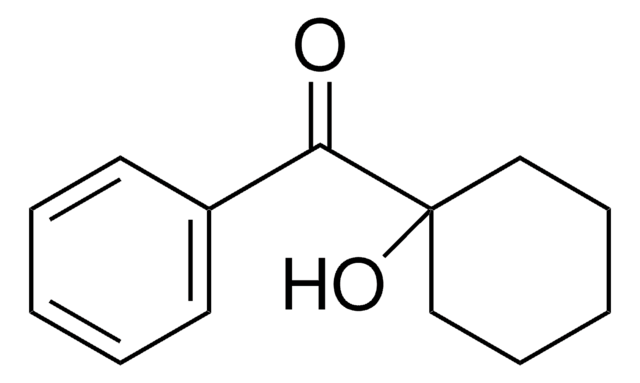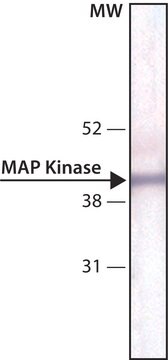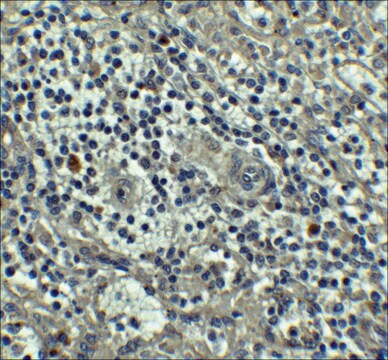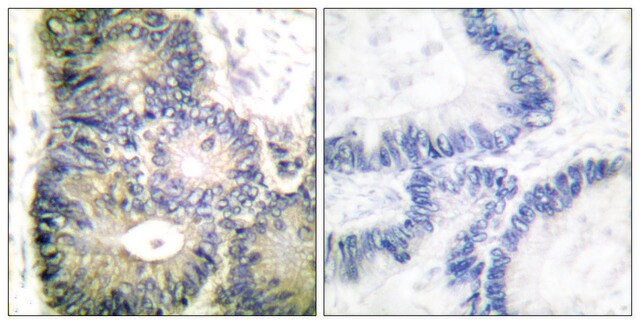C5737
Monoclonal Anti-Caspase 3 antibody produced in mouse
clone 84803.111, purified immunoglobulin, lyophilized powder
Synonym(s):
Anti-Apopain, Anti-CPP32, Anti-Yama
Sign Into View Organizational & Contract Pricing
All Photos(1)
About This Item
Recommended Products
biological source
mouse
Quality Level
conjugate
unconjugated
antibody form
purified immunoglobulin
antibody product type
primary antibodies
clone
84803.111, monoclonal
form
lyophilized powder
species reactivity
human
technique(s)
western blot: 1.0 μg/mL using human Jurkat cells
isotype
IgG2b
UniProt accession no.
storage temp.
−20°C
target post-translational modification
unmodified
Gene Information
human ... CASP3(836)
Related Categories
General description
CASP3 (caspase 3) is a cysteine protease belonging to the caspase protein family, and is related to interleukin-1β-converting enzyme (ICE). It is the human homologue of Caenorhabditis elegans Ced-3 protein. This protein forms a key element of apoptosis.
Specificity
Detects recombinant human precursor caspase 3 and the 18 kDa form produced during apoptosis.
Immunogen
recombinant 18 kDa subunit, amino acids 29-175, of human caspase 3.
Biochem/physiol Actions
CASP3 (caspase 3) is an essential protein of apoptosis, which includes multiple death-inducing signals, and caspase 3 functions at the last steps of programmed cell death. This protein is shown to be expressed in esophageal squamous cell carcinoma (ESCC), and its down-regulation is related to increased malignancy and reduced overall survival. Its expression in metastatic lymph nodes (LN) might serve as a marker for poor survival prognosis in patients with resected ESCC and metastasis to LN. Studies in multiple cancers such as, gastric, colorectal, ovarian and cervical cancers show that aberrant expression of this gene is linked with cancer progression and aggressive behavior. It might have potential as a marker to determine the prognosis of the above cancers.
Physical form
Lyophilized from a 0.2 μm filtered solution in 0.01 M phosphate buffered saline with 5% trehalose.
Disclaimer
Unless otherwise stated in our catalog or other company documentation accompanying the product(s), our products are intended for research use only and are not to be used for any other purpose, which includes but is not limited to, unauthorized commercial uses, in vitro diagnostic uses, ex vivo or in vivo therapeutic uses or any type of consumption or application to humans or animals.
Not finding the right product?
Try our Product Selector Tool.
recommended
Product No.
Description
Pricing
Storage Class Code
11 - Combustible Solids
WGK
WGK 1
Flash Point(F)
Not applicable
Flash Point(C)
Not applicable
Choose from one of the most recent versions:
Already Own This Product?
Find documentation for the products that you have recently purchased in the Document Library.
Customers Also Viewed
Qian Hu et al.
International journal of clinical and experimental pathology, 7(8), 5057-5070 (2014-09-10)
Emerging evidence has indicated that apoptotic cells have a compensatory effect on the proliferation of neighboring cells. Recent studies have shown that apoptotic tumor cells stimulate the repopulation of tumors from a small number of surviving cells by cleaved caspase-3
Xiu-Shen Wang et al.
World journal of gastroenterology, 20(15), 4414-4420 (2014-04-26)
To assess whether differential expression of caspase-3 in paired metastatic lymph nodes (LNs) is prognostic of survival in patients with resectable esophageal squamous cell carcinoma (ESCC). Capases-3 expression was evaluated immunohistochemically in 122 pairs of primary ESCCs and regional metastatic
Tingting Gu et al.
Oncology letters, 14(6), 6815-6822 (2018-02-10)
The present study explored the expression of tetraspanin 1 (TSPAN1) in esophageal carcinoma (EC) and its association with clinicopathological factors. TSPAN1 small interfering RNA (siRNA) was designed to target the TSPAN1 gene in Eca-109 cells in order to explore the
Chuandong Zhu et al.
Oncology letters, 15(4), 4221-4228 (2018-03-20)
The high atomic number of gold nanoparticles (GNPs) enables them to offer potential as practical and efficient radiosensitizing agents for cancer radiotherapy applications. In the present study, it was demonstrated that GNPs can significantly modulate the irradiation response of hepatocellular
Javier Marqués et al.
Antioxidants (Basel, Switzerland), 11(11) (2022-11-12)
NADPH oxidases (NOX) constitute the main reactive oxygen species (ROS) source in blood vessels. An oxidative stress situation due to ROS overproduction can lead into endothelial dysfunction, a molecular mechanism that precedes cardiovascular diseases (CVDs) such as atherosclerosis, myocardial infarction
Our team of scientists has experience in all areas of research including Life Science, Material Science, Chemical Synthesis, Chromatography, Analytical and many others.
Contact Technical Service
